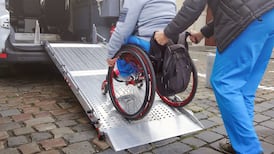Children’s violent behaviour towards their parents is the “last taboo” as a “hidden but growing” social problem in Ireland and across Europe, according to speakers at a recent conference at National University of Ireland, Galway (NUIG).
A new handbook on nonviolent resistance, published at the conference last month, aims to equip practitioners with the skills to support and empower parents, who are often very isolated.
The behaviour pattern, where a son or daughter under the age of 18 uses violence and/or controlling behaviour, has been the “elephant in the room”, with parents feeling humiliated, guilty and unable to talk about it, Dr Paula Wilcox of the University of Brighton said.
Dr Wilcox is leading the EU-funded project Responding to Child-to-Parent Violence (RCPV), which involves academics and practitioners from Ireland, England, Sweden, Bulgaria and Spain.
Noting that the research is continuing, Dr Wilcox cited recent statistics that showed 87 per cent of victims were mothers. Most support agencies had no specific definition and little experience in responding, she said, as it was a “new field with no policy or practical guidance”.
Son-to-mother violence was common in two-thirds of cases studied, compared with one-third of cases of daughter-to-mother violence. Its occurrence was not always associated with or linked to a domestic-violence background.
A rise in reported cases in Spain had been attributed to more permissive parenting styles, but, in Dr Wilcox’s view, this is only one aspect of a complex problem with many roots. Difficulties at school, mental health issues, and the impact of wider society and its “marketisation” are other contributory factors.
A study of older children and adolescents, aged between 11 and 16 years, has found that a sense of wellbeing among boys and girls fell significantly in this age group. Ironically, practitioners are trying to respond and intervene in a time of austerity, with resources and awareness about the issue both lacking, according to Dr Wilcox. This is compounded by the fact that there has been no routine monitoring or measurement, apart from phone helplines for parents.
The British-based Family Lives helpline has found that some one-third of the 80,000-plus calls to it involved a child’s physical aggression, she said.
Initiatives
Two initiatives – the nonviolent resistance training programme and Break4change, a similar programme run in Britain – were showing positive results, she said.
Parentline
Ireland also offers a 10-week course by telephone on nonviolent resistance .
Sweden has implemented similar programmes, while Bulgaria, also part of the research project, has run a police academy for children, which includes talking about child-to-parent violence, said Dr Wilcox.
Senior probation officer Rosemary Fox, who works for the Department of Justice and Equality, said she had heard about child-to-parent violence only six months ago. She noted that there was no mention of it in the national strategy on domestic, sexual and gender-based violence 2010- 2014.
Ms Fox said there was a need for far greater awareness, planning and a co-ordinated approach, noting she had witnessed “32 agencies going into some houses”, with little or no co-ordination between them.
In her view, there is a need to develop further the nonviolent resistance programme on an inter-agency basis, as it is producing results in giving parents the confidence to cope.
The nonviolent resistance programme is a “brief, systemic and cognitive behavioural response” to child-to-parent violence, according to handbook authors Declan Coogan and Eileen Lauster of NUIG.
Core elements
Mr Coogan is project leader for the RCPV project in Ireland and a lecturer in social work at NUIG’s school of political science and sociology. Core elements of the programme include a parental commitment to nonviolent resistance, regardless of provocation, development of de-escalation skills, refocusing interactions away from persistent conflict, and development of a support network.
It differs from other parenting programmes in that it involves the parents only, without the necessity to work directly with the child. While the parents are encouraged to seek the views of a son or daughter on resolving conflict, there is no expectation that the practitioner will meet the child.
Significantly, the authors note, a reassertion of parental control or changing a child’s behaviour is not the primary goal of the programme. Rather, there is a “shift in emphasis to influencing a change in the relationship between the parent and the child”.
See cpv.eu, cpvireland.ie, parentline.ie, parentingni.org











